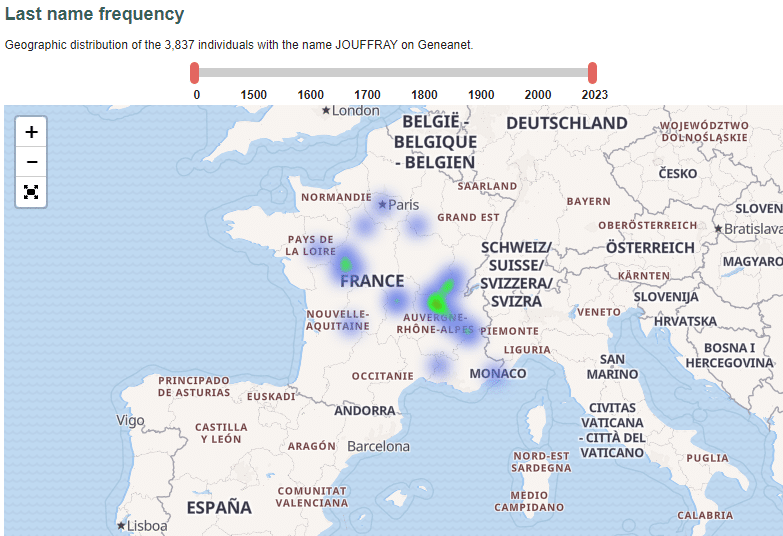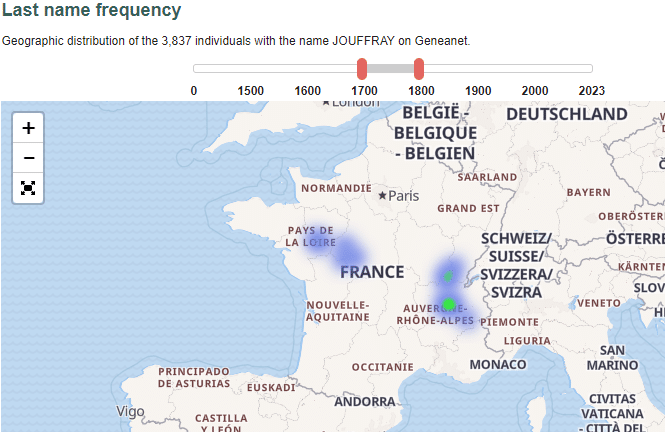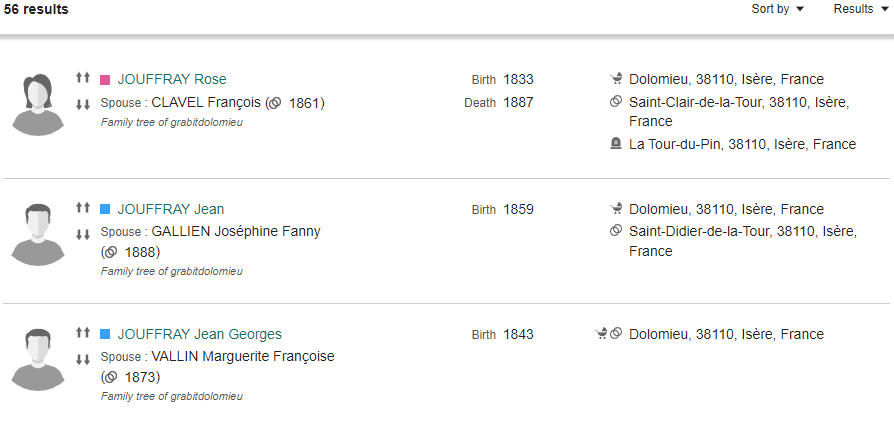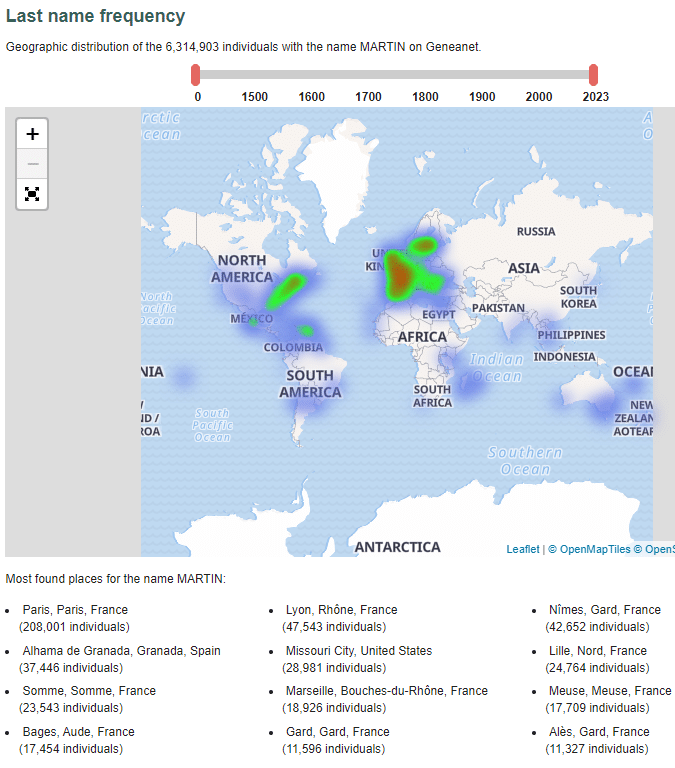Geneanet Last Name Frequency
 22
22Mar
Have You Ever Seen the Geographic Distribution of Your Surname on a Map?
If you have not, Geneanet has the perfect resource for you, their Last Name Frequency map![1] Who is Geneanet? I’m glad you asked. Geneanet is a collaborative French genealogy website and community. It was bought by Ancestry a few years ago, making it more visible and accessible within the greater genealogy community, and Ancestry has integrated the information contained in Geneanet communities’ family trees into the hints it provides for Ancestry subscribers. Perhaps you have gotten a hint on your Ancestry tree that was sourced from a Geneanet community member’s tree? Geneanet’s Last Name Frequency map that we are going to look at, is both entertaining and potentially a useful tool for identifying where your ancestors came from.
To access the Last Name Frequency map, you must be a Geneanet member and sign into your account. Open the drop-down menu under Resources and click on Origin of Last Names. This will open this page:

I put in my married name, JOUFFRAY, as the surname to search. It is 100% French and not very common. After clicking on the orange search button, the map with the frequency and distribution of the surname Jouffray appears.

The distribution and locations are based on Geneanet community member trees. Just below the Last Name Frequency title at the top of the image we can read ‘Geographic distribution of the 3,837 individuals with the name JOUFFRAY on Geneanet.’
The blue marks on the map of France indicate a presence of the surname in that locality. As the presence increases the color goes from blue to green and finally to brown to indicate the location with a high concentration of the surname you are searching for. This surname was only identified in France. If the surname had been identified outside of France a world map would be presented with the blue to brown markings.
Directly above the map is a timeline with orange bars at either extremity. Dragging the bars along the timeline allows a more time focused search. For example, putting the orange bars on 1700 and 1800 for the surname JOUFFRAY automatically adjusted the map to reflect the frequency and geographic distribution of the surname to that time span. The timeline only adjusts to 1600, or 1700 etc. I was not able to put the markers on 1650, or 1750, etc.

Beneath the map is the section that indicates the locations where the surname is found for the timespan selected. It provides the name of the town, the département, and country, in this case France. In parenthesis, under the location is the number of individuals identified from the Geneanet community members’ family trees in that town with the surname being searched.

This information can be very helpful in instances where the paper trail was lost for a family. When they disappear from the registers and you do not know where to search next, the Last Name Frequency map can provide some hints.
The last result of our surname search to examine is the surname in Geneanet members’ family trees. The search generates a list of members whose family trees contain the surname you are searching.

The top four member trees are identified on the same page as the map and localities. Clicking on “All family trees” opens a list with all of the member trees that contain the surname. Depending on the surname, this list can sometimes be very extensive. To see the list of individuals documented in a community member’s tree, click on the username in green next to the profile picture; a new tab opens with a list of individuals in that tree.
The information of each individual is presented below. The list can be sorted by first name, last name, or year. You can adjust the number of results per page under the Results drop down menu.

The Last Name Frequency map has limitations. When the surname is too common and there is a plethora of results, other research strategies will need to be used in conjunction with the map. Looking at the surname MARTIN illustrates this point.

As you can see, the surname MARTIN is almost everywhere! But, because the map draws its data from the community members’ tree you see the bias towards French research. All of the top locations listed for that surname are in France. If you have a common surname that you are researching, this tool should not be ignored, but you can count on spending a lot of time filtering through all of the information. Using the sliding timeline is one way to focus the results. Looking for community members whose trees focus on a particular geographic location is another way.
The internet age has moved collaboration among researchers to a new level. Geneanet’s Last Name Frequency map is a perfect example of collaboration. It combines all of the data from community member trees concerning surnames, dates, and locations and produces a map worth a thousand words. It also consolidates all of the big data into two lists; the first is the geographic location with the number of individuals documented in that location; and the second is a searchable list with all of community member trees that contain the surname of interest. There is a clear bias to French research as Geneanet was started in France for French research, but this could change in the future with Ancestry’s involvement. You must subscribe to Geneanet to access this tool.
Regardless of your research focus, this is a fun and useful tool. Give it a try, the results might surprise you. I put in my very Scottish/Irish maiden name and the results were accurate! Let us know what you find. Our excellent professional researchers at Price Genealogy can help you discover your hidden family lines.
By Christine
[1] Geneanet “Origin of Last Name,” Resources, geneanet.org (www.https://en.geneanet.org/surnames) this is a paid subscription community and research site that is owned by ancestry.com. To use this tool, you must have an account. All of the screenshots used in this blog post were taken from my search using my personal account and may not be reproduced.
